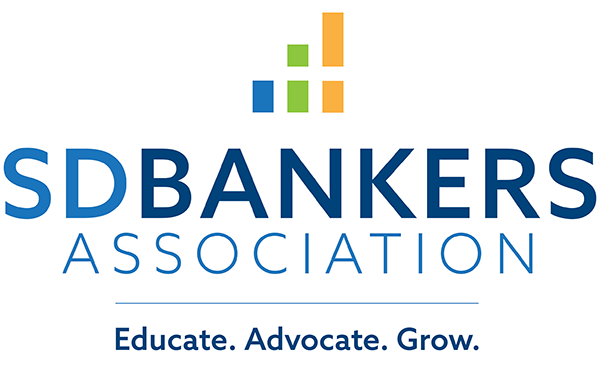- Education & Events
- Advocacy
- Products & Services
- Membership
- Resources
- SDBANKER Magazine
- SDBA eNews
- SDBA eNews Archives
- Legislative Update/Bill Watch
- South Dakota Bank Directory
- Women in Banking
- Scenes of South Dakota Calendar*
- Holiday Signs
- Regulatory Report
- South Dakota Banking Code
- Record Retention Manual
- Advertising & Sponsorship Guide
- COVID-19 Resources
- Mental Health and Crisis Prevention
- About
Event Calendar
|
Breaking into Banking 201: Analyzing Repayment Sources - Virtual
Wednesday, March 27, 2024
Category: SDBA Events
Breaking into Banking 201: Analyzing Repayment Sources - VirtualMarch 27, 2024Virtual via ZoomRegister Online | Print Details & Registration Information SEMINAR DESCRIPTIONThis 9-module online course is a “sequel” to the 101 course and is best taken after completion of that course, though it is not a prerequisite. The 201 course includes a case study and dives deeper into topics covered in modules 4, 6, and 8 of the 101 course: analyzing a borrower’s balance sheet, income statement, collateral, and risk ratings. SCHEDULE8:30 a.m. – 4:00 p.m. CDT REGISTRATION FEESRegistration Fee - $290 CANCELLATION POLICY: 100% refund canceled on or before March 19; 75% refund if canceled March 20-22; No refund if canceled after March 22. Substitutions allowed at any time. THIS SEMINAR WILL COVER1. Introduction and Overview
2. Balance Sheet Analysis, Part 1: Analyzing Liquidity
3. Balance Sheet Analysis, Part 2: Analyzing Leverage
4. Income Statement Analysis, Part 1: Revenues and Profit Margins
5. Income Statement Analysis, Part 2: Coverage Ratios
6. Collateral Analysis, Part 1: Non-current Assets
7. Collateral Analysis, Part 2: Trading Assets
8. Collateral Analysis, Part 3: Solving the Problems
9. Risk Ratings, Expected Loss and Provision for Credit Losses
SEMINAR PRESENTERAndy Keusal is passionate about using his teaching gift to help others reach their God-given potential. After earning his B.A. in psychology from the University of Notre Dame, he spent 18 years in commercial banking, during which he interviewed, hired and trained hundreds of new bankers. He also helped build and run one of the nation’s premier credit training programs at a large Midwest regional bank. He left his corporate career in 2015 to found Keusal Learning, where he now helps people master the basics of banking. Many of his trainees have moved on to prosperous careers in banking, private equity and even business ownership. WHO SHOULD ATTEND?This course is most appropriate for credit analysts, lenders, portfolio managers and others who need skills in financial statement analysis and writing credit documents. |

 Prev Month
Prev Month View Month
View Month Search
Search Go to Month
Go to Month Next Month
Next Month Export Event
Export Event